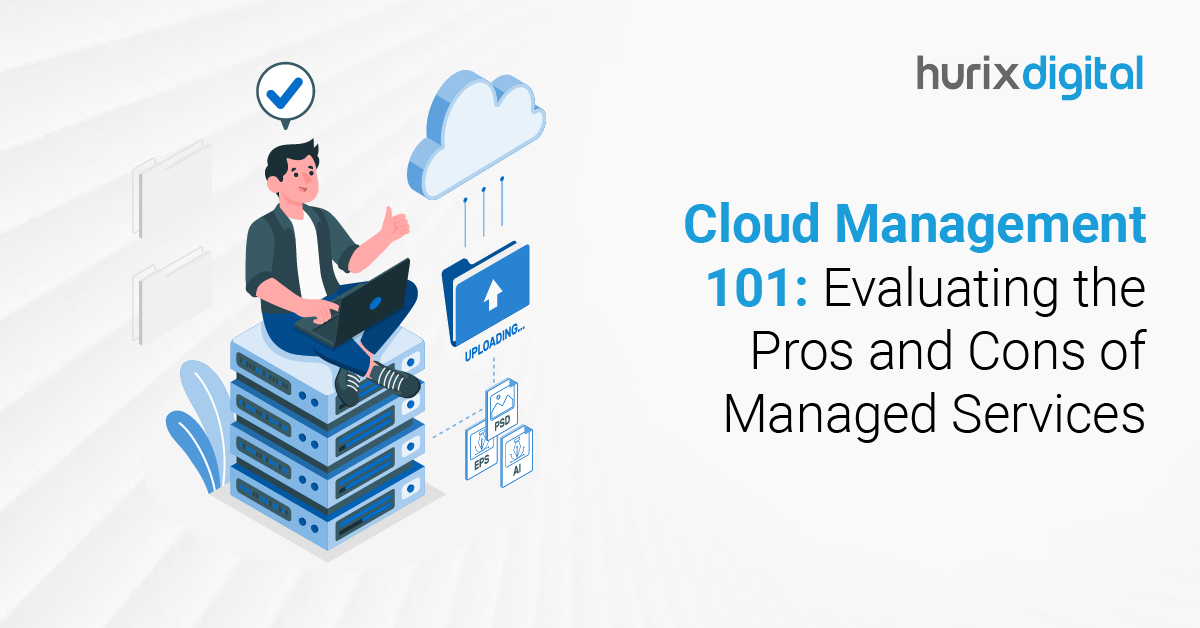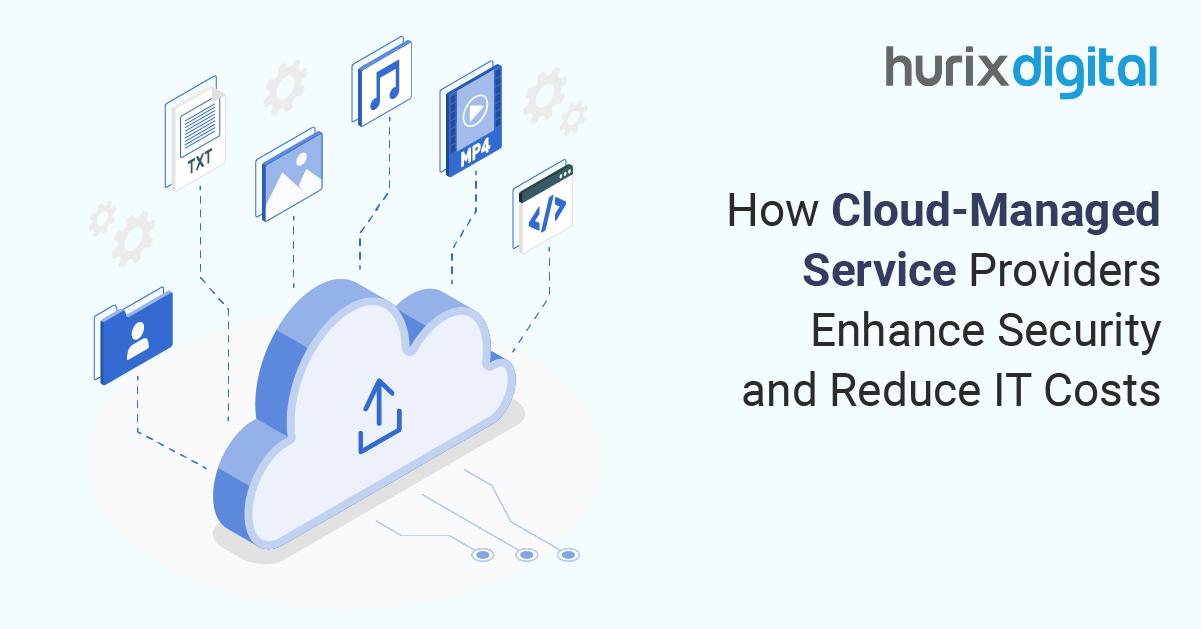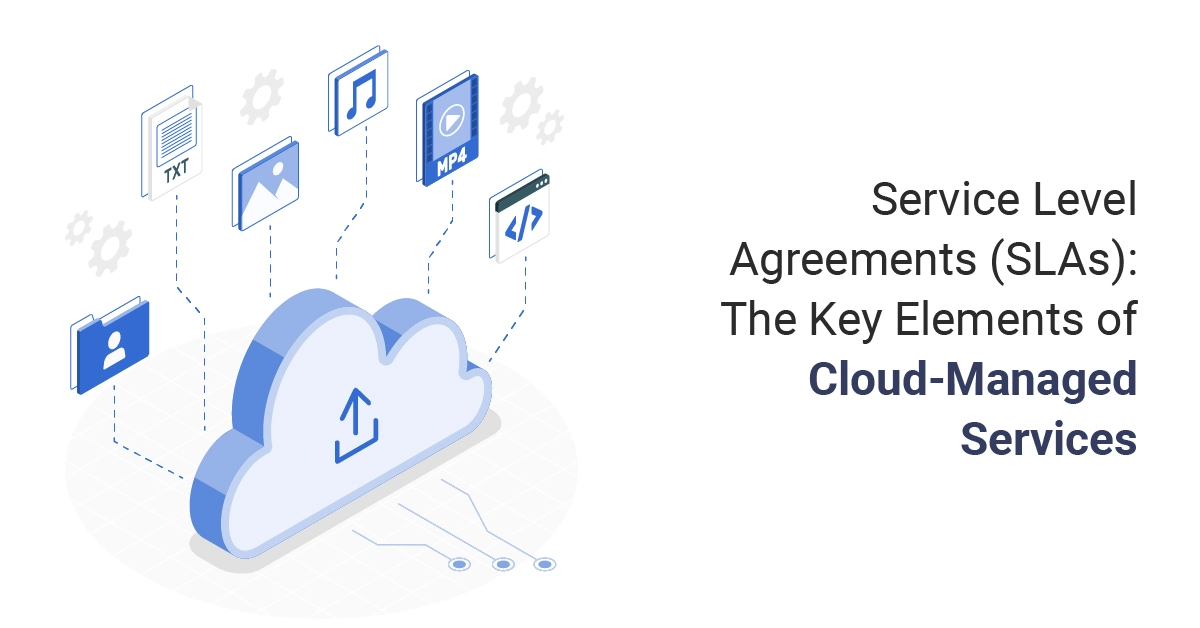
Gain Control Over Multi-Cloud Environments with Cloud Managed Services
Summarize with:
As more businesses migrate to cloud operations, multi-cloud deployments are gaining significant traction. A recent survey showed that 85% of firms operate on at least two cloud platforms, some using five or more. Enterprises often juggle a mix of hybrid clouds, public clouds, infrastructures, and on-premises services.
However, managing several cloud environments introduces challenges like lack of visibility and complex cost management. In addition, the absence of centralized management leads to a genuinely burdensome process of monitoring resource usage and cost optimization. This is where cloud-managed services step in.
These services offer a unified platform that simplifies multi-cloud management, streamlining cloud optimization efforts across the entire cloud ecosystem through a single, intuitive interface.
Table of Contents:
- What is Multi-Cloud Management?
- Importance of Multi-Cloud Strategy and Management
- Challenges of Multi-Cloud Management
- Managing Multi-Cloud Environments with Cloud Managed Services
- Wrapping Up
What is Multi-Cloud Management?
A multi-cloud strategy uses two or more cloud services, typically public or private clouds, and sometimes a combination of both. You can select the most appropriate platform for any given workload.
Such a strategy allows your IT teams to monitor, secure, and optimize workloads across multiple cloud platforms. For example, you might use AWS for storage and Azure for application hosting. Managing these environments separately is complex and time-consuming.
With the help of cloud-managed services, organizations maintain centralized management from a single interface, reducing complexity and enabling seamless integration between different platforms. This also ensures cloud governance and security by enforcing consistent policies across all platforms.
Tools like Kubernetes and other containers have made deploying and automating applications on several clouds easier. Thus, developers can conveniently create and control applications using multi-cloud automation, minimizing downtime and maximizing performance.
Also Read: A Comprehensive CIO’s Guide to Developing a Cloud-First Strategy
Importance of Multi-Cloud Strategy and Management
Adopting a multi-cloud strategy provides:
- Best of each cloud: Tailor workloads based on features, performance, or geographical needs.
- Avoid vendor lock-in: Maintain flexibility by choosing the best provider based on your needs.
- Advanced compliance: Meet regulatory standards consistently across multiple platforms.
Effective multi-cloud management offers several advantages:
- Reduced Strain on IT Teams: Centralized control simplifies cloud infrastructure management, giving your IT team complete visibility across multiple platforms.
- Valuable Insights: You gain insights into workloads across providers, enhancing operational efficiency.
- Enhanced Security: Consistent cloud security tools ensure proactive threat management across all cloud platforms.
- Cost Efficiency: Helps track usage and optimize spending through cloud cost management tools.
- Increased Reliability: Multi-cloud orchestration helps migrate workloads with minimal disruptions to maintain operation reliability in the event of a failure.
By utilizing cloud-managed services, you can ensure streamlined multi-cloud orchestration and optimized cloud performance.
Challenges of Multi-Cloud Management
There are many opportunities in multi-cloud management, but it also brings some significant issues:
- Enhanced Complexity: The steep learning curve can make multiple cloud platforms with different tools, APIs, and interfaces more complex.
- Integration Issues: Moving workloads between clouds requires seamless integration, but each provider has unique systems, making this difficult.
- Security Concerns: Ensuring consistent cloud security across multiple platforms is challenging, as vulnerabilities may arise from the complexity of managing different environments.
- Cost Tracking: Monitoring and optimizing cloud cost management becomes more challenging with multiple providers, leading to overspending if not carefully managed.
- Performance Consistency: Achieving consistent performance across different clouds can be a struggle, especially with varying service levels and geographic coverage.
To address these issues, companies must invest in cloud-managed services that automate processes and integrate with several clouds. This helps decrease the risks and complexity of multi-cloud environments while ensuring efficient cloud operations.
Managing Multi-Cloud Environments with Cloud Managed Services
Leveraging cloud-managed services is a great way to handle multi-cloud environments across all platforms. You need the right tools and best practices in place. Here’s a quick guide on how to navigate through multi-cloud environments with cloud-managed services.
1. Use Hybrid Cloud Management Tools
Multi-cloud environments require hybrid cloud management (HCM) tools for effective administration. These tools offer capabilities such as service aggregation and automated workload migration.
As a result, they streamline operations and improve efficiency without needing different tools for every cloud. Whether using AWS, Azure, or GCP, these tools help centralize cloud management, allowing smooth service execution.
Popular HCM tools include RightScale and OpenStack, which ensure seamless integrations, deployment orchestration, and analytics across multiple cloud providers.
2. Ensure Disaster Recovery and Reliability
A multi-cloud management strategy is critical for business continuity. By distributing workloads across clouds, you reduce risks associated with downtime. Plan backup solutions and disaster recovery paths to ensure reliable services even during outages.
Cloud-managed services help back up data from one cloud to another, often helping meet compliance standards. Multi-cloud environments are well-suited for this because you can store data in different locations or providers. This approach again ensures that resources are always available, no matter the circumstances.
3. Optimize Costs
Cost optimization is vital in multi-cloud environments. Shop for cloud providers that fit your budget and negotiate deals. Utilize cloud brokers to identify optimal solutions or leverage cross-cloud cost optimization tools. These tools can evaluate resource use across clouds, suggesting ways to minimize costs.
Additionally, cloud-managed services help you align resources and applications to achieve efficient usage. Building cloud-native applications also enhances performance while keeping expenses low.
4. Improve Security and Compliance
Security should remain a top priority in any multi-cloud setup. To unify cloud access, Identity and Access Management (IAM) solutions should be implemented. Data should be encrypted in transit and at rest, and proper key management should be enforced.
Treating all your cloud environments as a single security perimeter is essential. This unified strategy allows you to maintain consistent security policies across platforms. Furthermore, compliance with industry standards like GDPR becomes easier when security is managed centrally.
5. Manage Containerized and Serverless Workloads
Containers and serverless workloads are becoming standard in cloud operations. Container orchestration tools like Kubernetes help with seamless workload management across clouds.
However, they add complexity, especially in networking and security. On the other hand, serverless computing provides flexibility but relies on proprietary infrastructure, making cross-cloud management harder.
Cloud-managed services enable you to navigate these challenges by defining robust policies and ensuring smooth workload transitions between clouds.
Also Read: How to Access Cost-Effective Cloud-Managed Services?
Wrapping Up
Cloud-managed services simplify managing a multi-cloud environment, leading to optimized performance, cost, and security. The right solution allows you to integrate and govern multiple cloud platforms practically.
Hurix Digital provides customized cloud-managed services that optimize multi-cloud management. Our team helps you manage your IT environment efficiently with scalable, secure solutions.
Collaborate with Hurix Digital to improve performance and ensure business continuity. Book a call and explore our cloud-managed services today!
Summarize with:

Vice President and Strategic Business Unit Head – Cloud Services
A top technology management voice on LinkedIn with 20 Years of experience in Information Technology, Cloud Services, Digital Transformation, Application Modernization, Managed Services, IT Security Engineering and Operations Management. An avid technology Leader, Leadership Speaker, Author & Coach.
 A Space for Thoughtful
A Space for Thoughtful 



